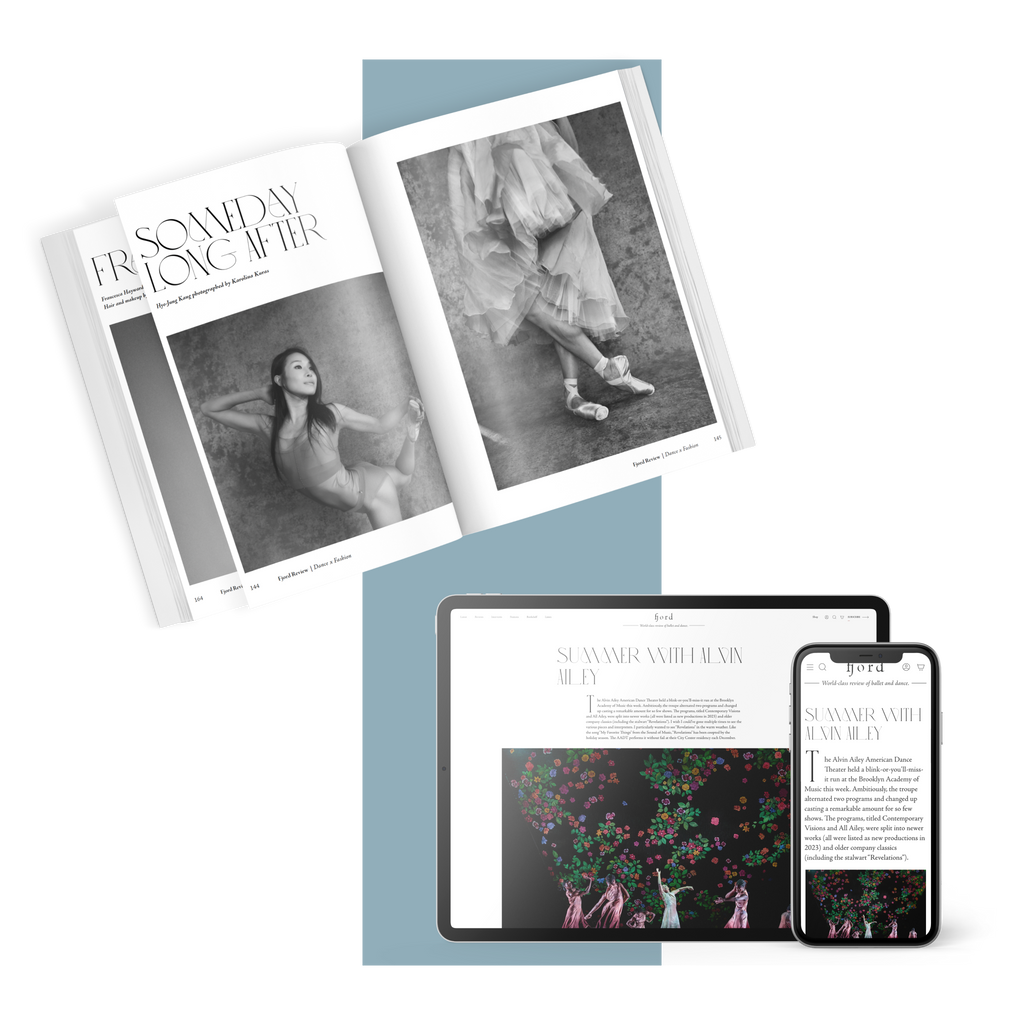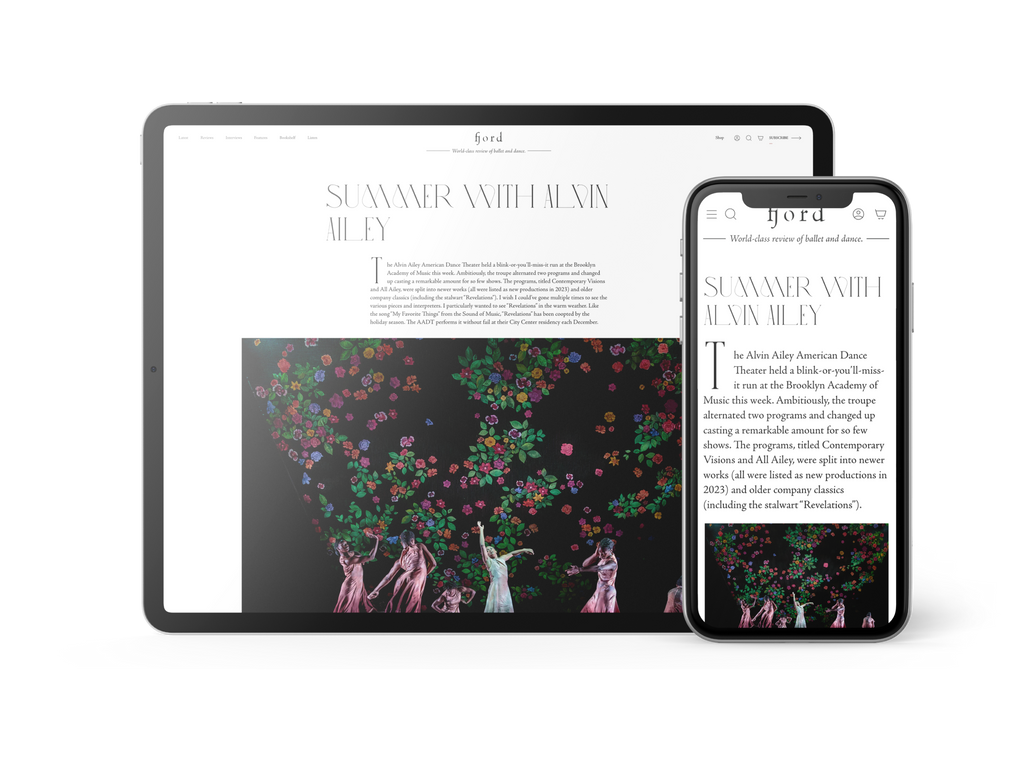Spellbound
Two performers crawl in on hands and knees wearing neon green, hooded coveralls—the lightweight papery kind made for working in a sterile environment—and clusters of balloons pinned to their backs.
Plus
World-class review of ballet and dance.
Group dynamics are the key focus in Anne Teresa de Keersmaeker's explosive “Rain,” which responds to the classic "Music for 18 Musicians" (1974-6) by American avant-garde composer Steve Reich. It is of course not the first time she has worked with Reich's music, as her company Rosas have previously performed to "Drumming," another seminal Reich piece. It's a perfect fit, as she is a deeply lyrical choreographer, fully cognisant of the nuances and textures of Reich's oeuvre: the rhythmic shifts, throbs, hums and waves; the voices which pulse like heartbeats. She really puts her dancers through their paces—it's almost as arduous as a marathon.
Performance
Place
Words

Rosas perform Anne Teresa de Keersmaeker's “Rain.” Photograph by Anne Van Aerschot


“Uncommonly intelligent, substantial coverage.”
Your weekly source for world-class dance reviews, interviews, articles, and more.
Already a paid subscriber? Login
Two performers crawl in on hands and knees wearing neon green, hooded coveralls—the lightweight papery kind made for working in a sterile environment—and clusters of balloons pinned to their backs.
PlusWill Rawls makes boundaries visible by defying them. Known for the disciplinary and topical range of his projects, the choreographer, director, and performer approaches issues of representation in “[siccer],” a multi-part, multi-site work co-presented by L’Alliance New York’s Crossing the Line Festival. A live performance at Performance Space New York accompanies a multimedia installation at the Kitchen, a book published by Wendy’s Subway, and an album published by the artist. With a creative process reaching back to 2018, the work delves explicitly into pandemic-era energies and inertias with focused intimacy and a pervasive sense of instability.
PlusIt is always interesting when multiple theme steps emerge over the course of a mixed repertory evening, but it is uncanny on one featuring five different ballets, each with a different choreographer and composer, covering a twenty-year span (2005-2025).
PlusZvidance premiered its new work “Dandelion” mid-November at New York Live Arts. Founded by Zvi Gotheiner in 1989, Zvidance has been a steady presence in the New York contemporary dance scene, a reliable source of compositional integrity, and a magnet for wonderful dancers.
Plus
comments